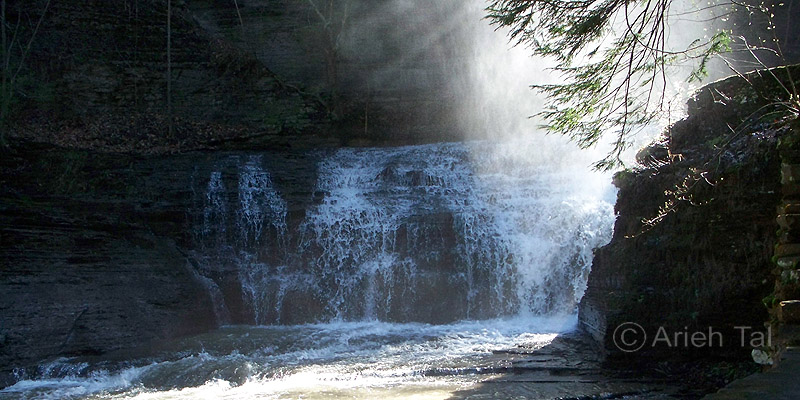|
.Vascular Plants of the Gorge at |
||||
| .Home | Documents | |||
 |
||||
|
.Why so few graminoids in and near the gorge? |
||||
|
.Vascular Plants of the Gorge at |
||||
| .Home | Documents | |||
 |
||||
|
.Why so few graminoids in and near the gorge? |
||||
|
. |
x While there are several hundred species of graminoids in the northeastern flora region, relatively few were found during this survey: grasses (12 species), sedges (10 species) and rushes (2 species). When we think about the types of places with high numbers of grasses and sedges, several readily come to mind: prairies, savannas, marshes, and wet meadows. Those are all open places with a great amount of direct sunlight. Species diversity increases with habitat diversity. Most of the area surveyed for this project is densely forested. Forested sections include both higher elevation drier sites, lower elevation mesic sites, a swamp-like seep with wetter conditions, and a couple open wooded areas with lower tree density. However, within the geographic scope of this project, there are no ponds, marshes or open river habitats. In a previous study of the vascular plants of Buttermilk Falls State Park (Krusi, 1977)*, the majority of graminoid species found were located in Larch Meadows, near Jennings Pond and along the margins of Lake Treman, where habitat conditions are more favorable. Conditions within this narrow gorge (the primary wetland), are dark, cool and often damp; conditions that don't favor high species diversity in general. Mist from the waterfalls often fills the air and frequently keeps cliffs and rock outcrops moistened. There is continuous seepage of water over steep, rocky walls and outcrops above the creek. Water flows tend to be relatively rapid, or at least continually moving. That further restricts diversity to those species that can survive in rapidly flowing water over eroded bedrock. It's worth noting that diversity of broad-leaved species is also diminished within the gorge itself (i.e., the creek channel and along the gorge trail). There are relatively few weedy, non-native species or invasive species in the more shaded sections of the gorge. Most of the grass and sedge species found during this survey, are located within the small (quarter acre) old home site, referred to here as the "vacant lot". The vacant lot is an exposed, highly disturbed parcel, brimming with diversity, including high numbers of non-native weeds, very few of which have succeeded in migrating up to the dark, forested gorge trail. To return to the graminoid key, click "About Graminoids".
|
|
*
Krusi,
Jean
Bangs.
The
Vascular
Plants
of
Buttermilk
Falls
State
Park.
Master
of Science thesis, Cornell University, 1977. |
x
x
|
Images and text copyright Arieh Tal, 2017-2022. All rights reserved. ( Terms of Use ) |